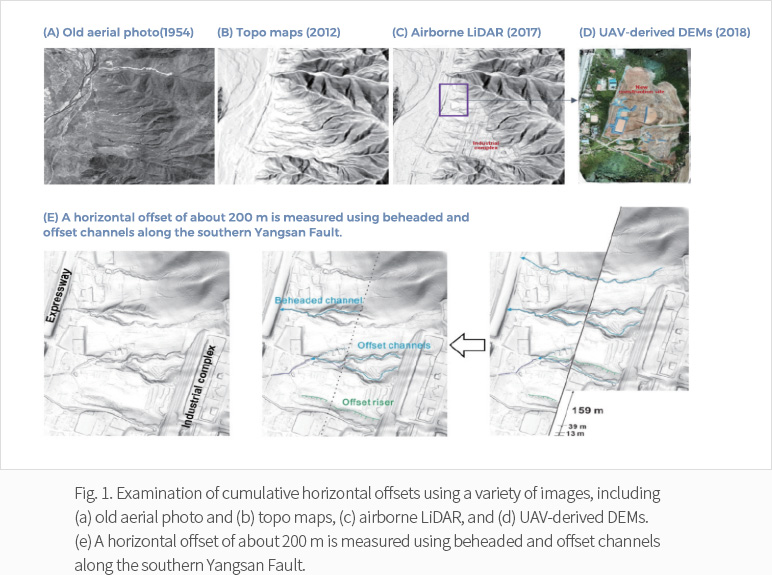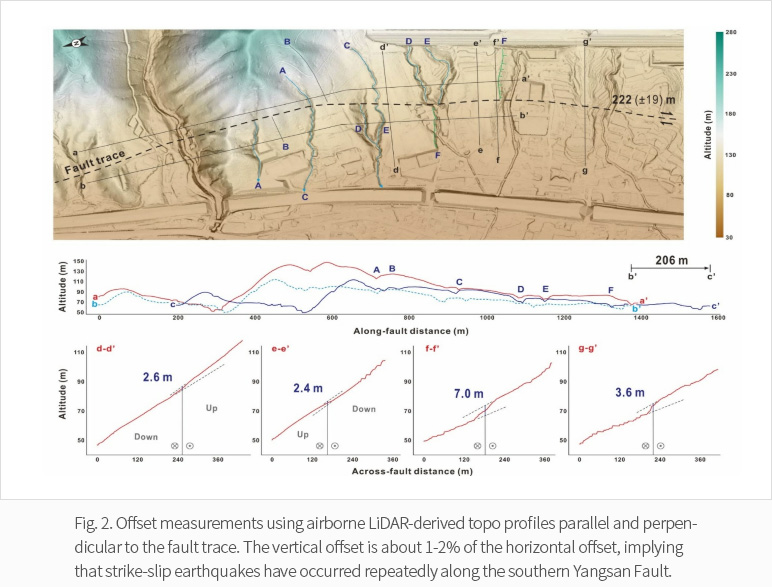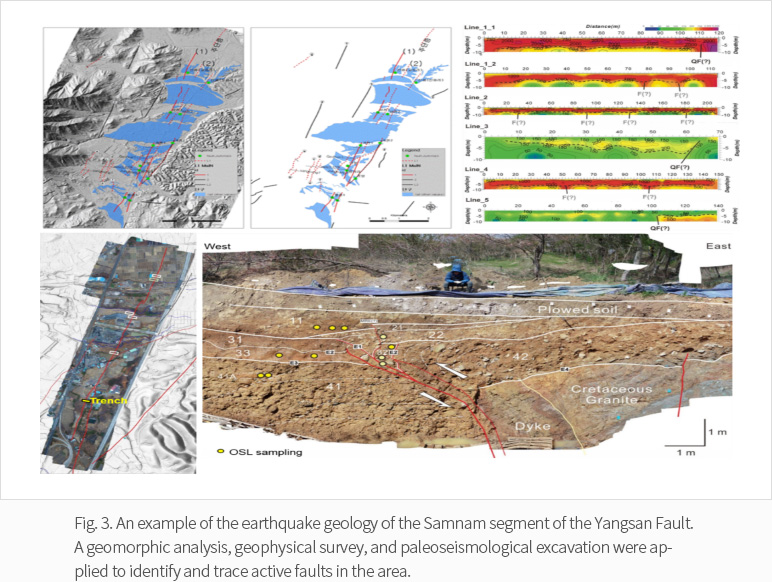
Approximately 90% of strong (M≥~6) historical earthquakes have occurred on active fault zones. However, only a small section of active fault zones have seismic activity. This inconsistency arises because the recurrence intervals of intraplate faults are typically measured over thousands to tens of thousands of years, whereas the seismic record is only hundreds of years long. Therefore, the identification, mapping, analysis, and segmentation of all active faults is, particularly in intraplate regions, a very important element of seismotectonic studies as they apply to long-term earthquake hazard assessments.
The evolution of a given site with regard to the potential hazard of a strong earthquake is based extensively on the concepts of the recurrence of faulting along pre-existing faults. The main tool is 'earthquake geology', which has largely focused on surface processes. This is why only strong earthquakes produce surface deformations in the geomorphic and stratigraphic records. This research field has grown enormously as a discipline since the advent of paleoseismological techniques for dating prehistoric fault ruptures as an aid to hazard assessment. The Center for Active Tectonics at KIGAM, launched in October of 2018, is leading the active fault research based on the earthquake geology of the Yangsan Fault System in the southeastern part of Korea.
KIGAM is leading two R&D projects associated with active faults in Korea. Firstly, we survey the central region of the Yangsan Fault. A main goal of this project is to provide integrated geological information by multidisciplinary approaches, including geology, Quaternary geology, geophysics, and paleoseismology, and to evaluate earthquake hazards in the central region of the Yangsan Fault. Secondly, we produce a nationwide active fault map in a project conducted jointly by KIGAM, PKNU, PNU and KBSI. The main survey activities for this year are focused on the southern region of the Yangsan Fault.
Along the central and southern Yangsan Fault, in fact, it is not easy to trace the history of paleoearthquakes due to low slip-rate as well as the hidden fault geometry beneath young sediment deposits. Our team is working on the mapping of source rock and recent depositions, subsurface geophysical surveys, and trench and quaternary dating analysis. Moreover, we examine earthquake cycle models based on paleoseismological data and the segment geometries of major fault systems


